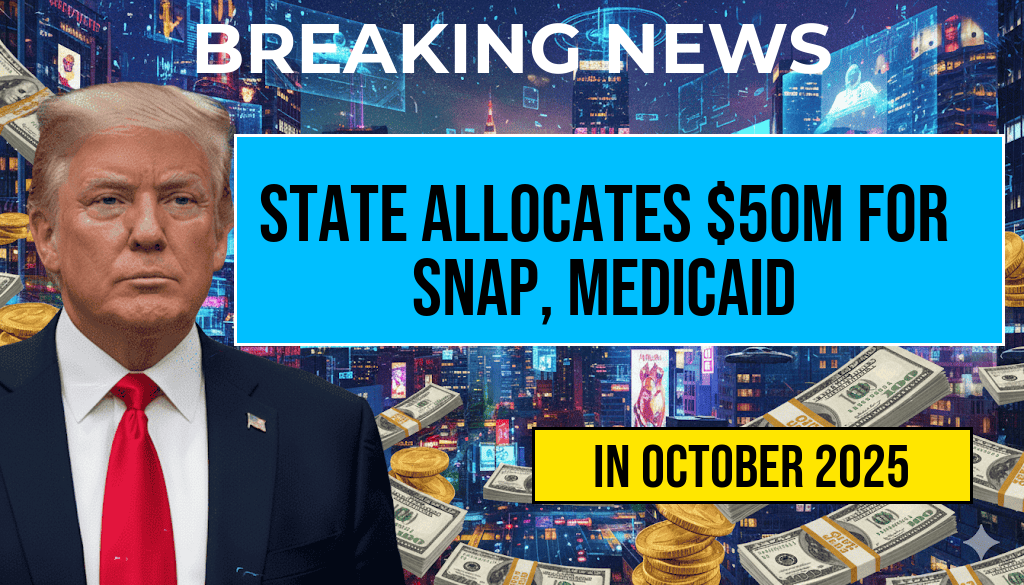The state government has announced a fifty million dollar initiative to mitigate the financial impact of recent federal cuts to SNAP (Supplemental Nutrition Assistance Program) and Medicaid services. This move aims to shield vulnerable populations from the anticipated reduction in federal support, which has raised concerns among advocacy groups, healthcare providers, and policymakers alike. The allocation is part of a broader effort to stabilize essential services amid shifting federal policies that threaten to tighten access for millions of residents. Officials emphasize that the funds will be directed toward expanding state-level assistance, ensuring continued nutrition security and healthcare coverage for low-income families during a period of financial uncertainty.
Federal Funding Reductions Prompt State Response
Over recent months, federal authorities announced significant modifications to SNAP and Medicaid funding structures, citing budget adjustments and reevaluations of program eligibility. These changes are projected to reduce federal spending on social safety net programs by billions annually, with an estimated 10-15% decrease in benefits for some households, according to the U.S. Department of Agriculture (USDA) and the Centers for Medicare & Medicaid Services (CMS). While federal policymakers argue that reforms aim to streamline services and curb waste, critics warn that the most vulnerable populations may face increased barriers to essential resources, especially amidst ongoing economic challenges.
State-Level Measures to Offset Federal Cuts
The newly announced $50 million fund, approved by the state legislature earlier this week, is designed to act as a financial buffer. State officials say the funds will be used to expand existing assistance programs, such as supplemental food aid initiatives and Medicaid support services, to prevent coverage gaps. The governor highlighted that this proactive approach is vital to maintaining the health and nutrition of residents who depend heavily on federal aid programs. SNAP and Medicaid are central to the state’s social safety net, serving millions of low-income individuals and families.
Impacts on Low-Income Populations
| Program | Pre-Federal Cuts | Projected Reduction | Estimated Number of Affected Residents |
|---|---|---|---|
| SNAP Benefits | Average $250/month per household | 10-15% | Approximately 200,000 households |
| Medicaid Coverage | Full healthcare coverage for low-income individuals | Variable, with some beneficiaries losing services or facing increased costs | Over 1 million residents |
Advocacy groups warn that these reductions could exacerbate food insecurity and limit access to healthcare, especially among seniors, children, and those with chronic conditions. The National Low Income Housing Coalition and other organizations have urged states to act swiftly, emphasizing that federal cuts threaten to undo years of progress in reducing poverty and improving health outcomes.
State’s Funding Strategy and Future Outlook
The state’s plan involves reallocating existing resources, establishing emergency funds, and increasing outreach efforts to ensure that eligible residents are aware of alternative assistance options. Officials also indicated that the funds could be used to support local organizations and healthcare providers in expanding their capacity. The initiative underscores a broader recognition that federal policy shifts require robust state-level responses to uphold social safety nets.
Experts note that this strategy may serve as a model for other states facing similar federal reductions. However, the effectiveness of the funds will depend on timely implementation and administrative efficiency. Given the complexities of federal-state program coordination, officials are optimistic that their approach can mitigate some of the adverse effects, but caution that ongoing monitoring and potential future adjustments will be necessary.
Community and Political Reactions
Community leaders and elected officials have expressed cautious support for the funding plan. Senator Jane Doe stated, “While federal cuts are concerning, our state’s proactive measures demonstrate a commitment to protecting our residents from unnecessary hardship.” Conversely, some advocates argue that federal support should be restored rather than offset through state funds, emphasizing that the root issue lies in federal policy decisions.
As discussions continue, stakeholders are closely watching the implementation process and the tangible impact on vulnerable populations. The hope remains that targeted state investments can provide a buffer and preserve access to vital services during these challenging times.
Additional Resources
Frequently Asked Questions
What is the purpose of the $50 million allocation by the state?
The $50 million allocation is designed to offset federal cuts to SNAP and Medicaid, ensuring continued support for eligible residents.
Which programs are affected by the federal cuts mentioned in the article?
The federal cuts primarily impact SNAP (Supplemental Nutrition Assistance Program) and Medicaid, which provide essential food assistance and healthcare coverage.
How will the state distribute the allocated funds to support affected residents?
The state will allocate the $50 million through various programs and assistance initiatives to mitigate the impact of federal reductions and support vulnerable populations.
What are the expected benefits of this financial support?
The funds are expected to protect access to food and healthcare for low-income residents, preventing potential hardships caused by federal budget cuts.
Are there any longer-term plans to address federal funding reductions?
The article focuses on the initial response with the $50 million allocation, but the state may consider additional measures to ensure sustainability of these essential services in the future.






